Word Art Day: Guillaume Apollinaire's typographic revolution is spelled in Calligrames
World Art Day is an international celebration of the fine arts which was declared by the International Association of Art (IAA) in order to promote awareness of creative activity worldwide. To celebrate this year's event Typeroom pays tribute to a master of visual poetry and typographic art, Guillaume Apollinaire.
Wilhelm Albert Włodzimierz Apolinary Kostrowicki was born a Russian subject in Rome, Italy and raised speaking French, among other languages. Having moved from Italy to France Apollinaire became one of the most popular members of the artistic community of Paris. A friend of Pablo Picasso, Gertrude Stein, Max Jacob, André Salmon, André Breton, André Derain, Faik Konica, Blaise Cendrars, Pierre Reverdy, Alexandra Exter, Jean Cocteau, Erik Satie, Ossip Zadkine, Marc Chagall, Marcel Duchamp and Jean Metzinger, Apollinaire wrote the preface for the first Cubist exposition outside of Paris; VIII Salon des Indépendants, Brussels, 1911.
A poet, novelist and essayist, Apollinaire frequented the artistic and literary circles of the French capital, where he acquired a certain reputation and wrote Les peintres cubistes, the text that became a manifesto of Cubism.
The author of a variety of different texts (prose fiction, drama, librettos etc.) Apollinaire published two significant works during his lifetime. "Alcools: Poèmes 1898-1913" (1913) and "Calligrammes: Poèmes de la paix et de la guerre 1913- 1916" (1918).
Noted for its use of “caligrams” in which typeface and arrangement of words on the page add to the meaning of the compositions Apollinaire's “Poems of Peace and War 1913-1916” is a stunning contribution to the tradition of concrete or visual poetry.
"The Calligrammes are an idealisation of free verse poetry and typographical precision in an era when typography is reaching a brilliant end to its career, at the dawn of the new means of reproduction that are the cinema and the phonograph" described this forefather of Surrealism in a letter to André Billy.
"As well as having a keen eye for the visual arts, the visual dimension of writing was extremely important to Apollinaire. Apollinaire took great care over the typographical layout of his work. Technical developments such as the phonograph, the telephone, radio and cinema had provided new ways of storing and diffusing language without recourse to the written word. For Apollinaire, writing no longer had the same role, its status had changed and Apollinaire was one of the first to interrogate this" notes the author of "An Introduction to Guillaume Apollinaire".
"For Apollinaire language was something to be experienced for its concrete and graphic shapes, for its potential to convey meanings in other ways. Apollinaire insists on the `materiality’ of language, that is to say, its existence as visual marks of white on black or as patterns of sound". In "Calligrammes" Apollinaire incorporates "words, letters and phrases into complex visual collages. The black on white of the printed page became a new field of experimentation. He experimented with a poetry in which a simple reading along the familiar linear axes (left to right, top to bottom) was no longer possible. The page became a sort of canvas for experimentation with different spatial relationships and with the possibility of multiple readings along different axes".
Mercure de France published "Calligrammes: Poèmes de la paix et de la guerre 1913- 1916" shortly after his death -Apollinaire became one of the many victims of the 1918 Spanish Flu pandemic. This collection of poems is highly regarded as one of the most influential books of the twentieth century.
The first World Art Day on April 15, 2012 was supported by all IAA national committees and 150 artists. The date was decided in honor of the birthday of Leonardo da Vinci. Da Vinci was chosen as a symbol world peace, freedom of expression, tolerance, brotherhood and multiculturalism as well as art’s importance to other fields.
World Art Day has also been supported online, especially by the Google Art Project.
Images via Picasso Museum, Moddle Unifr and Wikipedia.
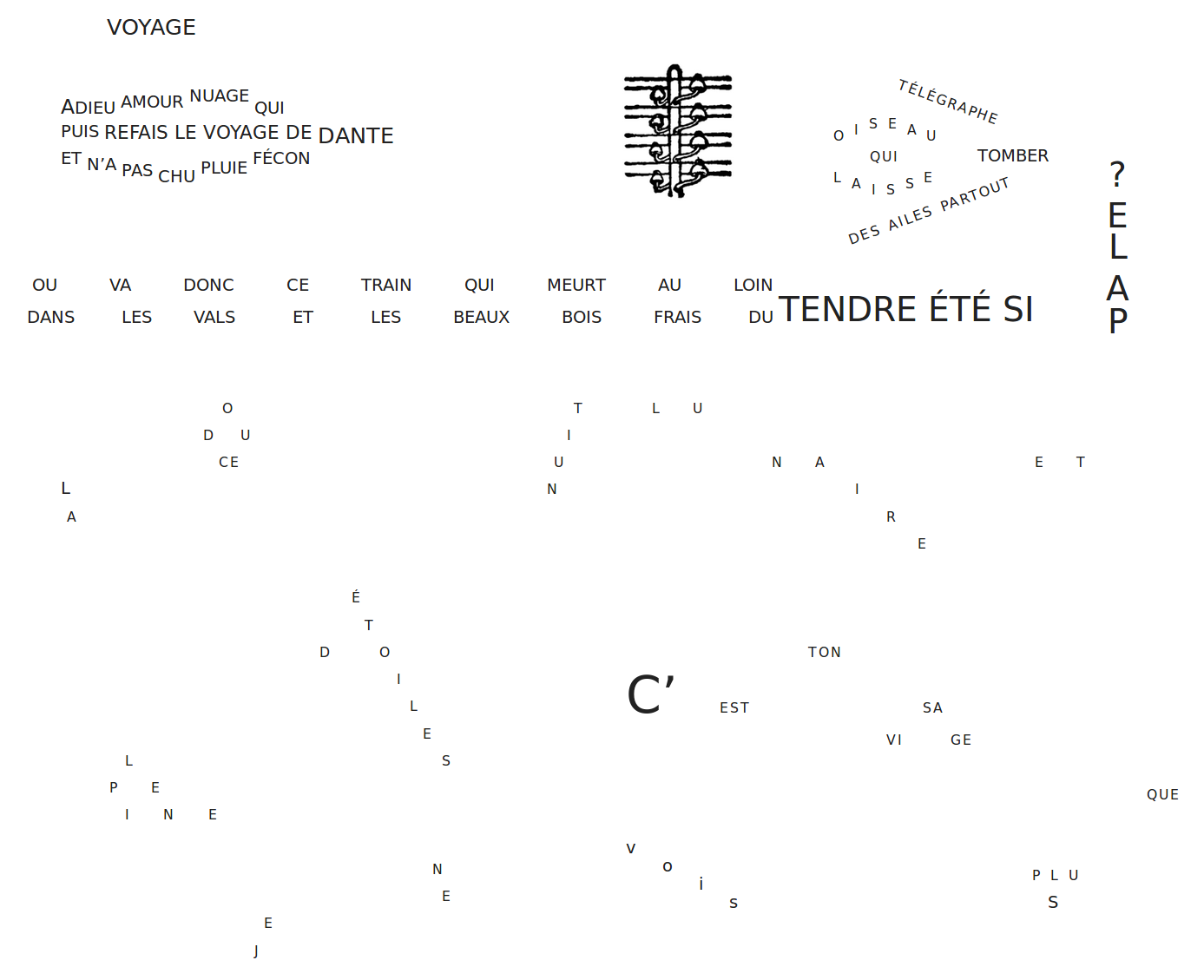

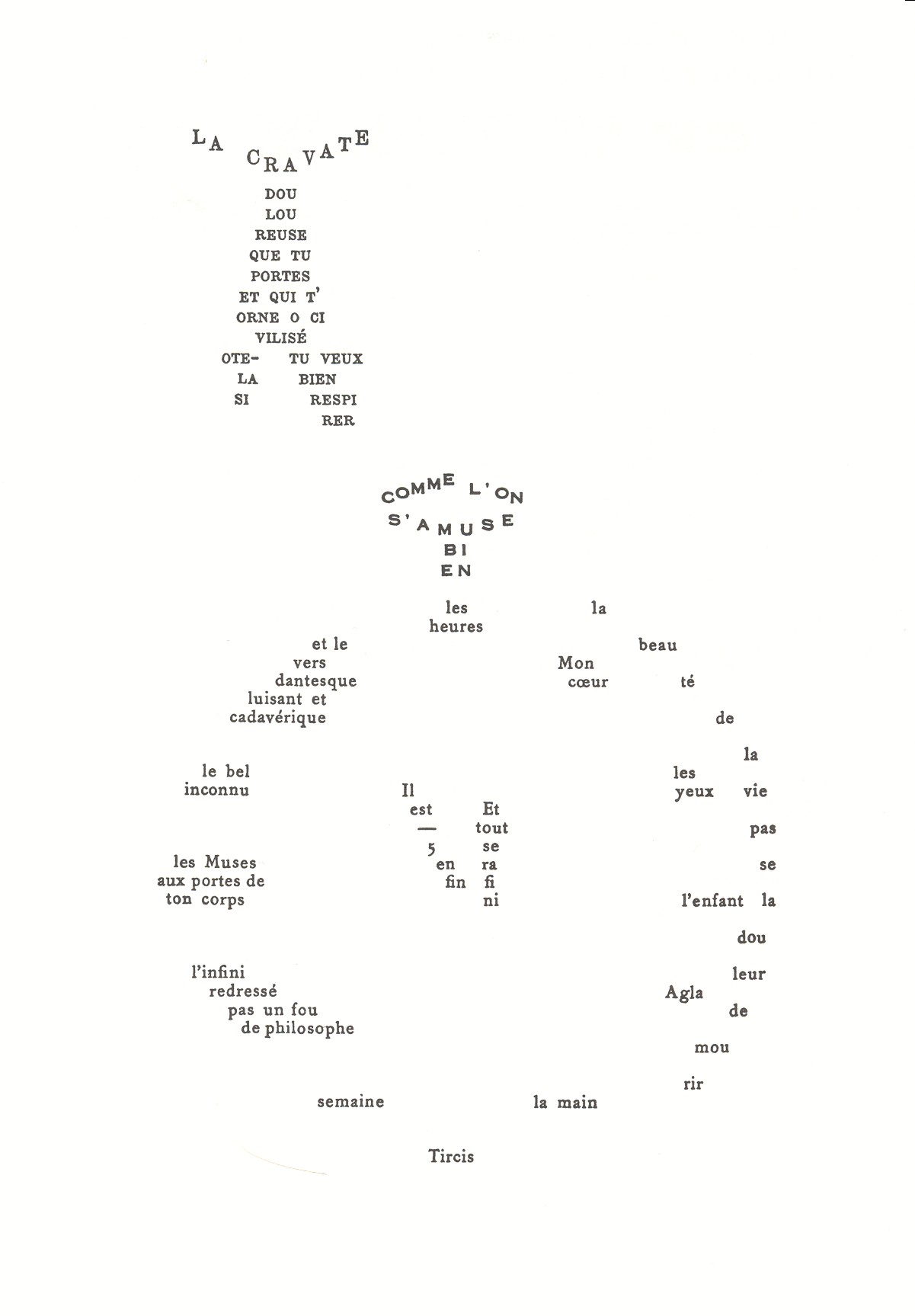
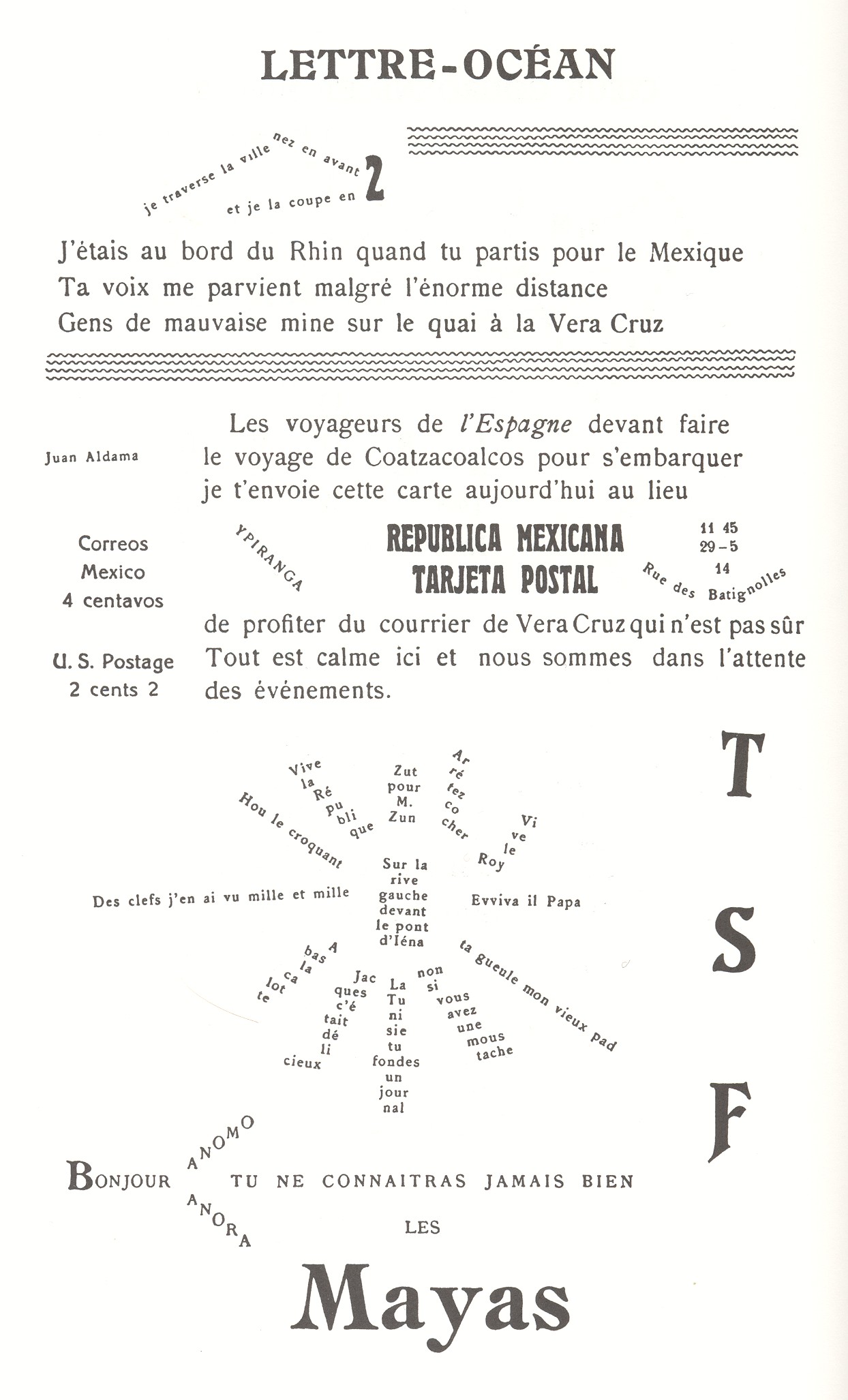
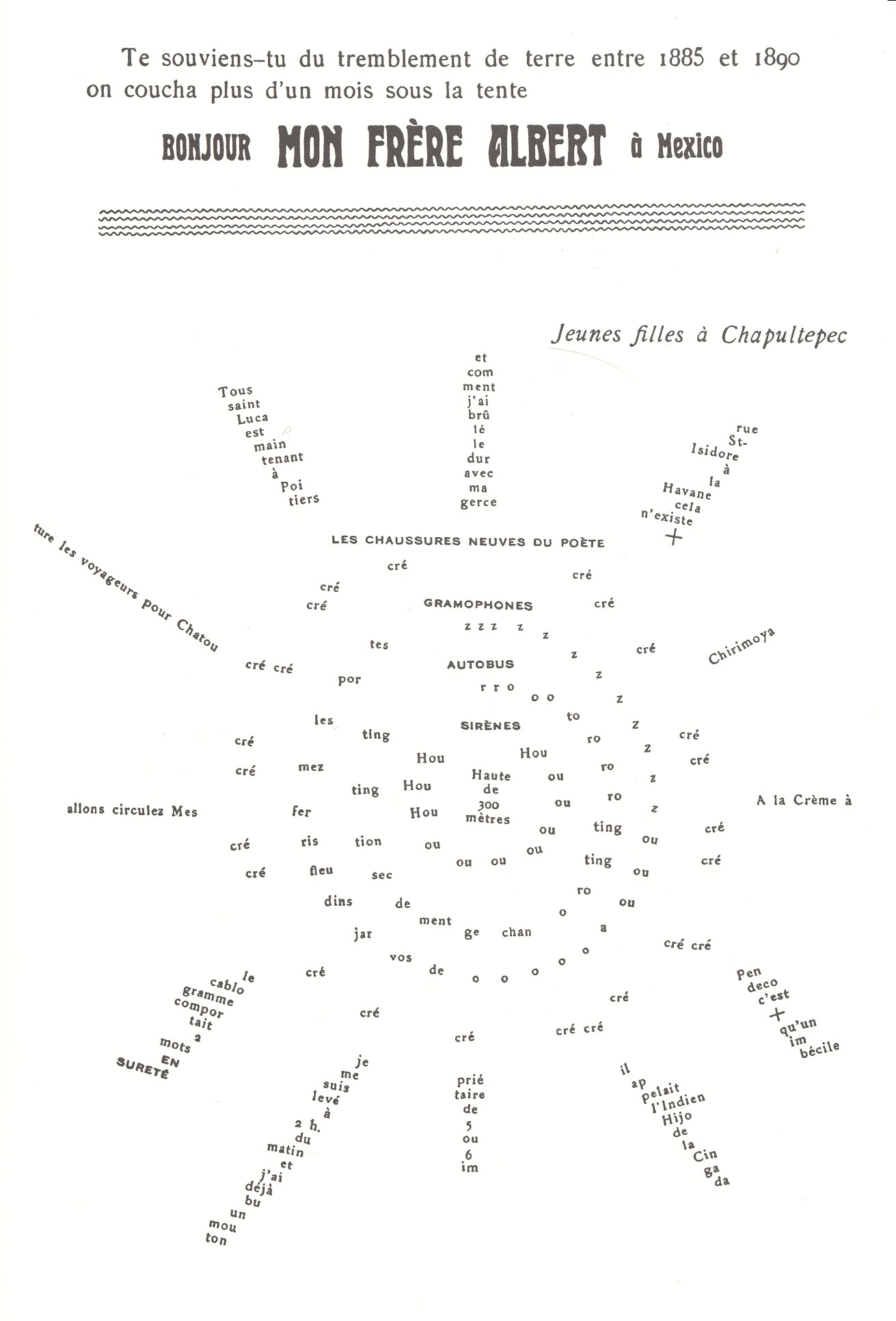
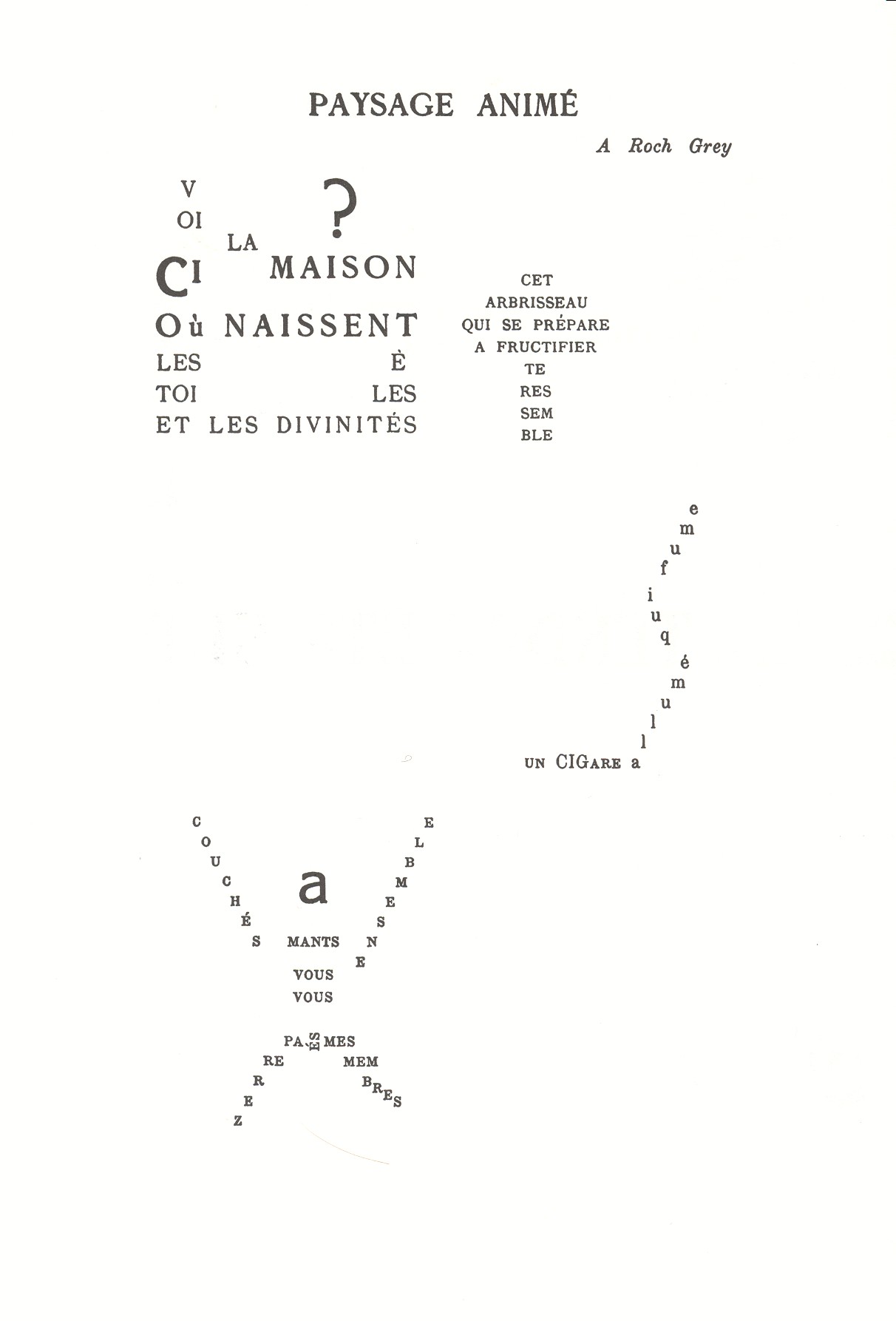

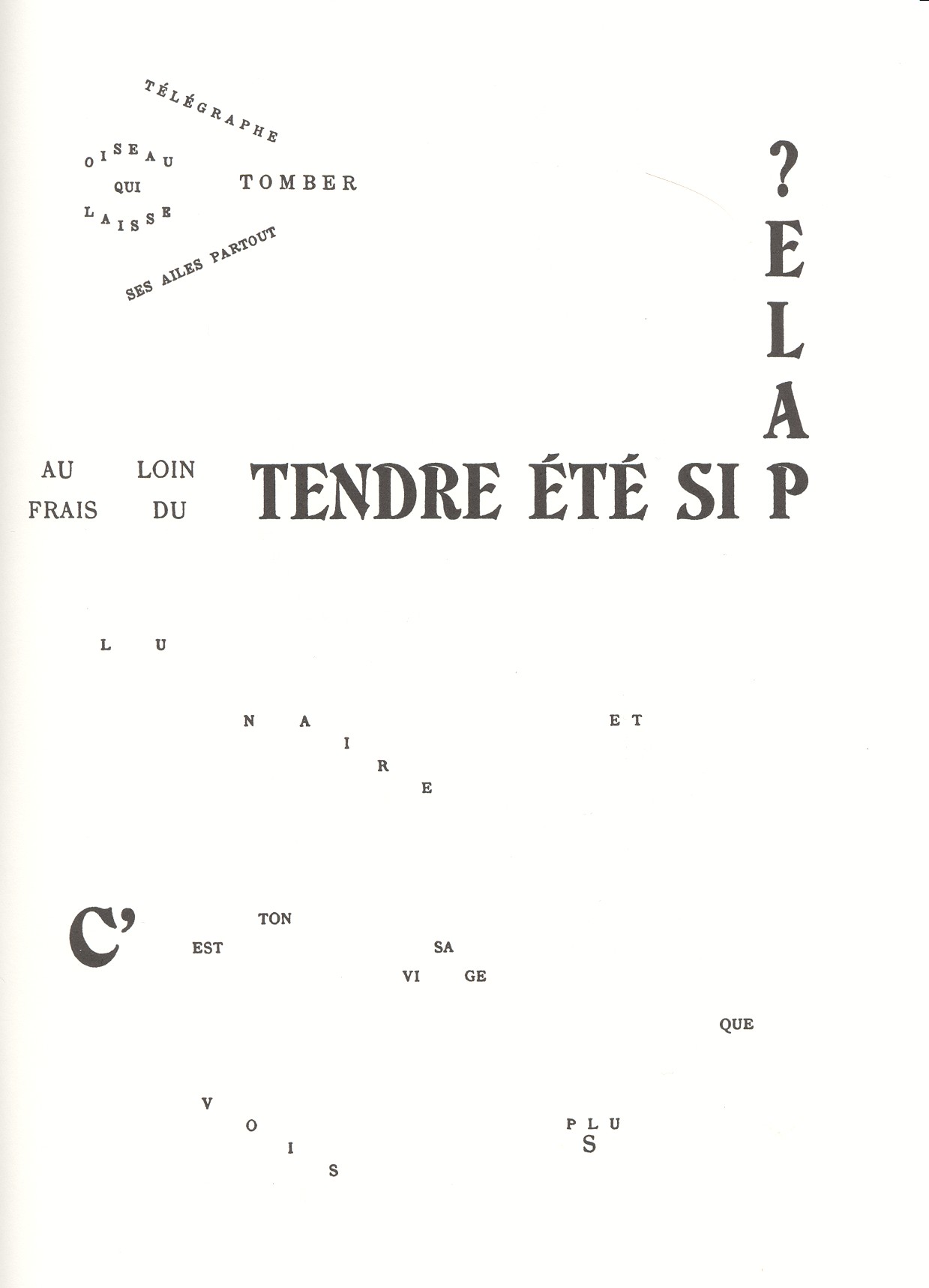

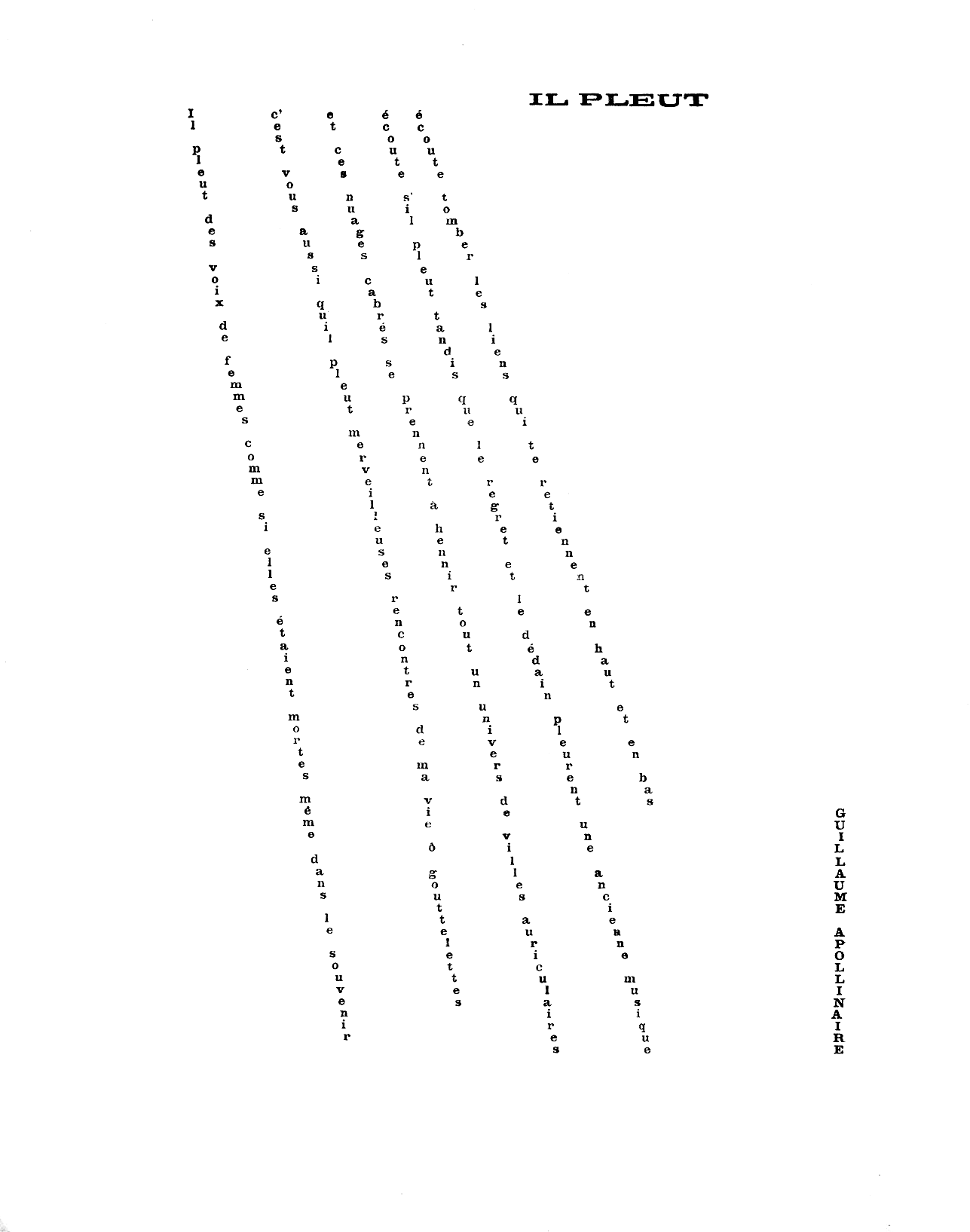

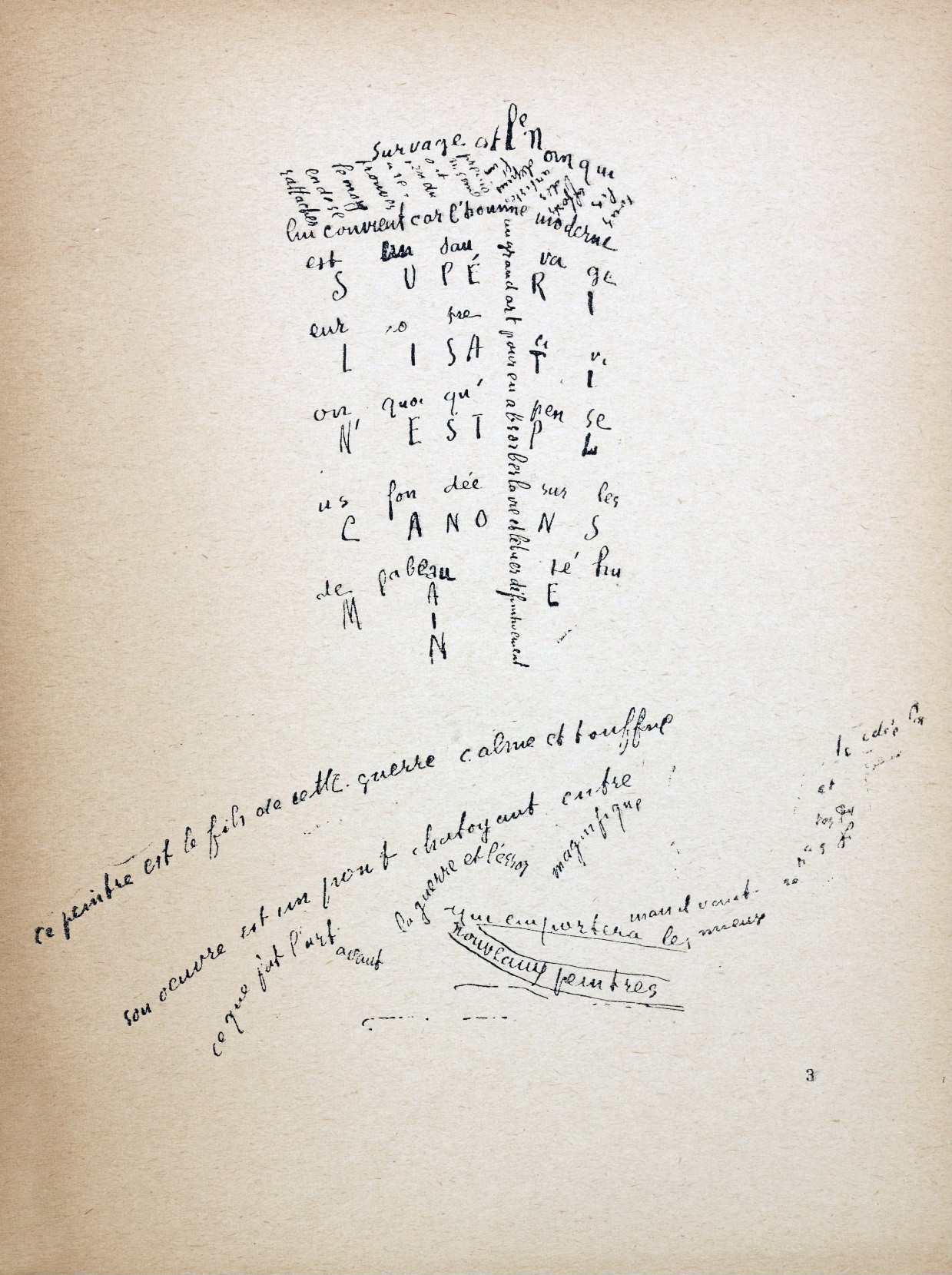
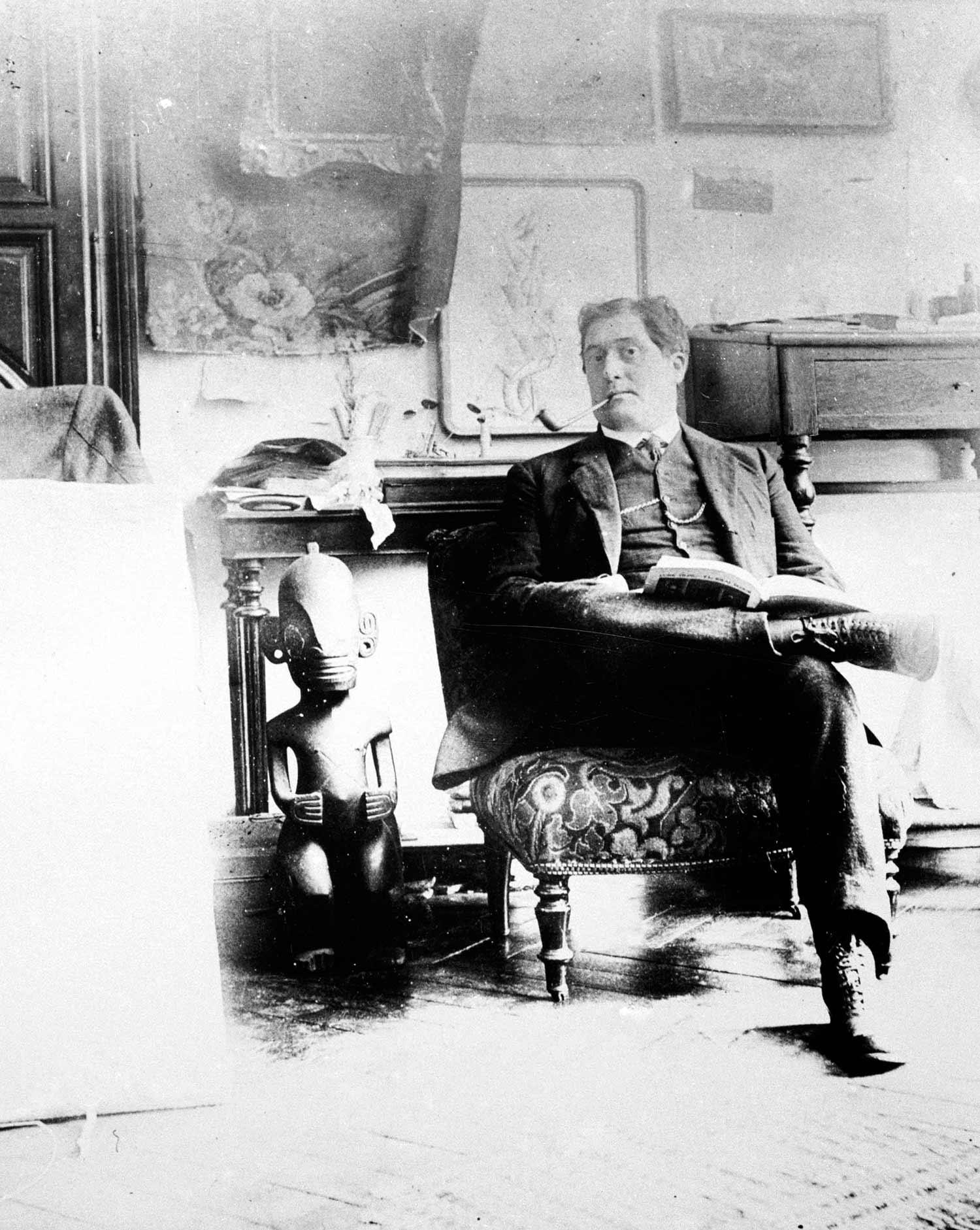
Tags/ typography, origins, book, manifesto, marcel duchamp, paris, visual poetry, pablo picasso, literature, visual arts, cubism, poetry, concrete poetry, word art day, guillaume apollinaire, international association of art, jean cocteau, google art project







.jpg)












